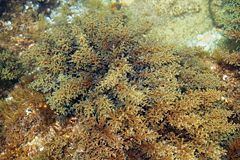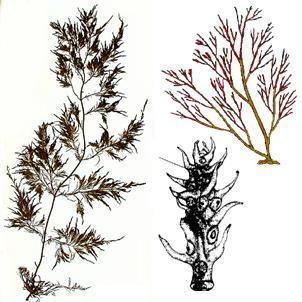Superphylum Heterokonta Scientific name Cystoseira Rank Genus | Family Fucaceae Higher classification Fucaceae | |
Similar Brown algae, Fucales, Cystoseira barbata, Forkweed, Sargassum | ||
Cystoseira tamariscifolia
Cystoseira tamariscifolia
Description
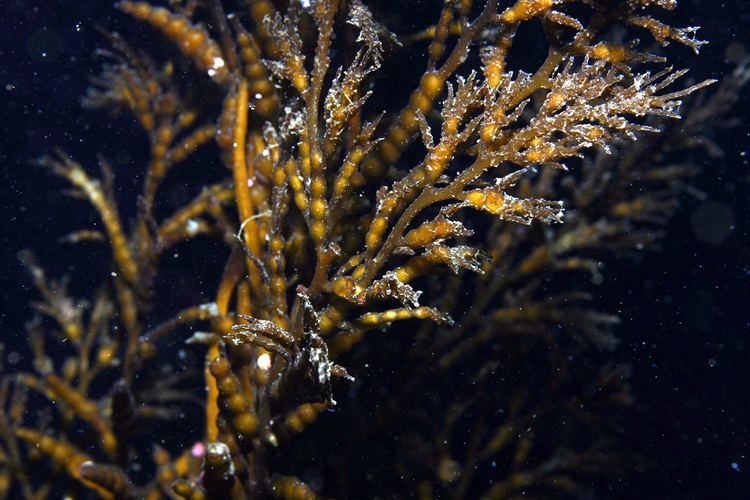
Cystoseira is characterized by highly differentiated basal and apical regions and the presence of catenate pneumatocysts (air-vesicles). In Cystoseira old plants have an elongated main axis, and in time the primary laterals become proportionally elongated. Their lower parts are strongly flattened into ‘foliar expansions’ or basal leaves. Fertile regions which bear conceptacles are known as receptacles. These are normally found at the tips of the branches. Their basal and apical regions are highly differentiated. They have catenate pnuematocysts (air vesicles). The aerocyst or air vesicles keep the organism erect, by causing it to float in strong currents.
Distribution
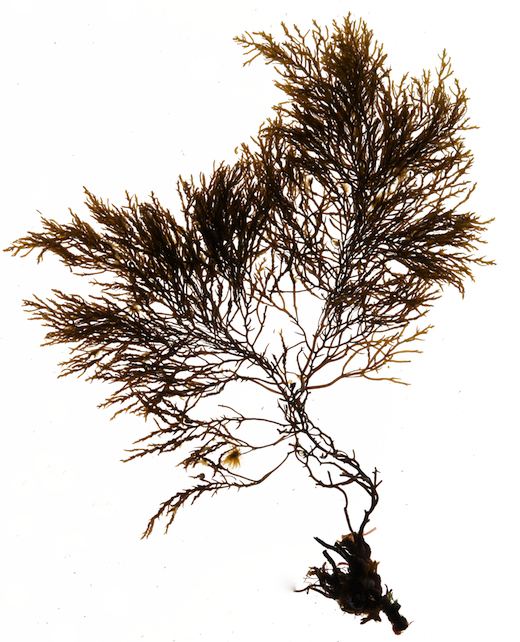
Cystoseira is one of the most widely distributed genera of the Fucales order and provides an essential habitat for many epiphytes, invertebrates, and fish. Cystoseira is found mostly in temperate regions of the Northern Hemisphere, such as the Mediterranean, Indian, and Pacific Oceans.
Bioindicators
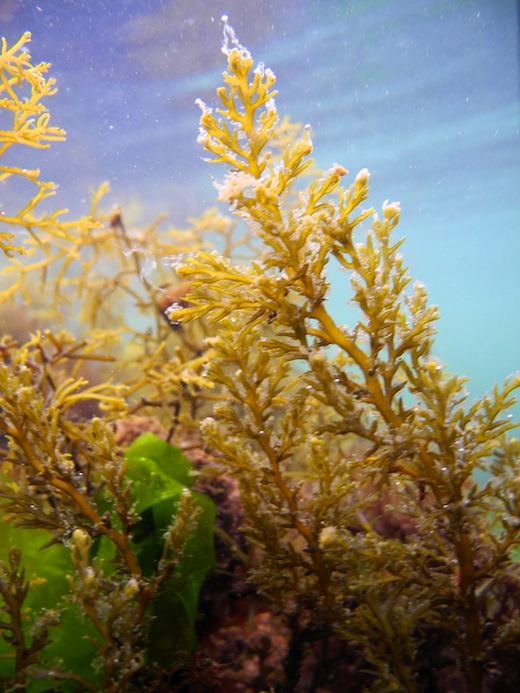
Cystoseira depend on good water quality, and can be used for bioindication. This was discovered in a study of Cystoseira species undertaken on Menorca.
Species
The following species are listed in the World Register of Marine Species:
